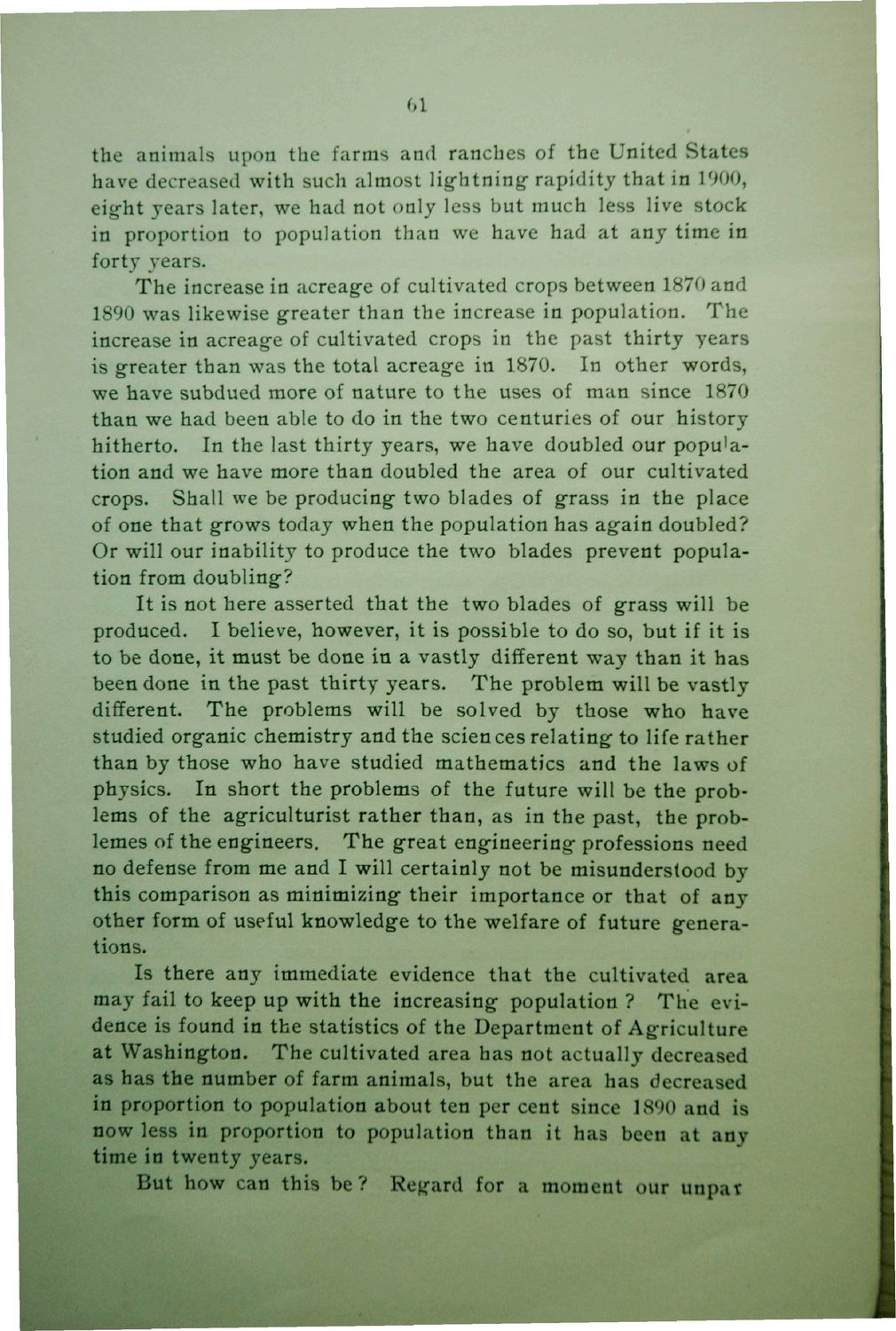| |
| |
Caption: Dedication - Ag Building
This is a reduced-resolution page image for fast online browsing.

EXTRACTED TEXT FROM PAGE:
61 the animals upon the farms and ranches of the United States have decreased with such almost lightning- rapidity that in 1900, eight years later, we had not only less but much less live stock in proportion to population than we have had at any time in forty years. The increase in acreage of cultivated crops between 1870 and 1890 was likewise greater than the increase in population. The increase in acreage of cultivated crops in the past thirty years is greater than was the total acreage in 1870. In other words, we have subdued more of nature to the uses of man since 1870 than we had been able to do in the two centuries of our history hitherto. In the last thirty years, we have doubled our population and we have more than doubled the area of our cultivated crops. Shall we be producing two blades of grass in the place of one that grows today when the population has again doubled? Or will our inability to produce the two blades prevent population from doubling? It is not here asserted that the two blades of grass will be produced. I believe, however, it is possible to do so, but if it is to be done, it must be done in a vastly different way than it has been done in the past thirty years. The problem will be vastly different. The problems will be solved by those who have studied organic chemistry and the sciences relating to life rather than by those who have studied mathematics and the laws of physics. In short the problems of the future will be the problems of the agriculturist rather than, as in the past, the problemes of the engineers. The great engineering professions need no defense from me and I will certainly not be misunderstood by this comparison as minimizing their importance or that of any other form of useful knowledge to the welfare of future generations. Is there any immediate evidence that the cultivated area may fail to keep up with the increasing population ? T h e evidence is found in the statistics of the Department of Agriculture at Washington. The cultivated area has not actually decreased as has the number of farm animals, but the area has decreased in proportion to population about ten per cent since 1890 and is now less in proportion to population than it has been at any time in twenty years. But how can this be ? Regard for a moment our unpat
| |